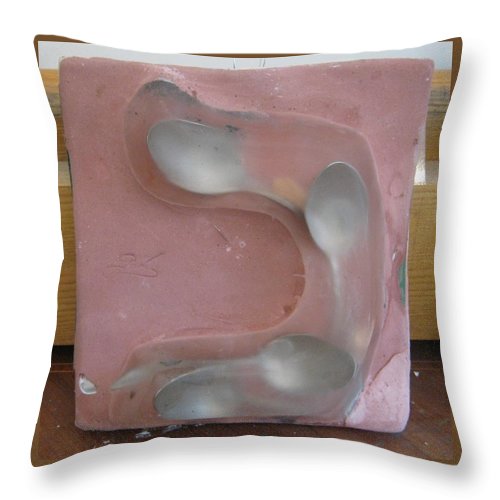Kaf, the 11th letter of the Hebrew Alphabet, means literally the cupped palm of the hand.
It is like a cupped, outstretched palm, ready to receive. The shape of all containers – a bowl, a cup, a jar, is based on that basic curved shape, and Kaf represents the idea of a container. It represents form. A house is a form that contains the goings on of the people inside it; a body is a form which contains the life and energy of the person. The forms of the physical world are where the spiritual essence of life is able to manifest. The Kaf also teaches us to shape ourselves- to bend the ego and shape our character.

The Kaf is what gives form to the matter. It contains all the possibilities of containing, building, and forming all existence. It is the letter of formation, bending the straight line into a curved shape. It also symbolizes the crown of the Torah – Keter כתר.

Kaf teaches us to bend and govern our tendencies, and to shape our character. It teaches us humility, that we must bend our ego and the resistances in our character. It teaches us molding, sorting, comparing. We must bend the matter to the spirit and the spirit to the matter, constantly connecting the thought of wisdom, with the action and doing of it. It is not enough to have a thought to do good, you must find a way to manifest it in reality. The Kaf also teaches us about what we contain. Do we contain worries and negative thoughts? Or do we contain what we most aspire to, in order to make it into a reality?

The two letters of the full spelling of the kaf, are the initial letters of the two Hebrew words: koach ("potential") and poel ("actual"). Thus, the kaf hints at the power latent within the spiritual realm of the potential to fully manifest itself in the physical realm of the actual. G-d must create the world continuously; otherwise Creation would instantaneously vanish. His potential is therefore actualized at each moment. This concept is referred to as "the power to actualize potential ever-present within the actualized." In Chassidut we are taught that this should be one's initial awareness upon awakening. Since the literal meaning of the letter kaf is "palm" - the place in the body where potential is actualized - this awareness is reflected in the custom of placing one palm on the other upon awakening, before reciting the Modeh Ani prayer: "I thank You, living and eternal King, for you have mercifully restored my soul within me; Your faithfulness is great."

Placing palm on palm is an act and sign of subjugation, similar to the act of bowing before a king. Whereas in bowing one totally nullifies one's consciousness in the presence of the King, in placing palm on palm one enters into a state of supplication and prayer to the King to reveal new will from His supernal crown (Will) to His subjects.

Kaf is also the root of the word kipah (etymologically, the root of the word "cap" in English), the yarmulke or skullcap. In reference to the creation of man it is said: "You have placed Your Palm [kaf] over me."Our Sages refer to Adam as, "the formation of the Palms [kaf] of the Holy One, Blessed be He." The awareness of the presence of the "Palms" of G-d over one's head, in His ongoing creation of him, becomes the cap (kipah) on his head. Even higher, the very power to actualize potential manifest in His Palms, as it were, derives ultimately from His crown (the power of will) above His head (i.e. "superrational" Will.)

As a verb, kaf means to "subdue" or "coerce." We are told in the Talmud that at the time of the giving of the Torah at Sinai, "He suspended the mountain over them as a barrel." In Chassidut it is explained that the Divine motivation manifest in this act was actually one of greatest love for Israel. So much love was revealed by all the tremendous revelations at Sinai that the people were "coerced," as it were, to respond in acceptance of the yoke of Heaven, in love. The mountain itself appeared to forcefully embrace the people. Here the secret of the kaf is the "much" revealed from the "little" point of the yod.

Kaf can contain oppositions, and sometimes even the apparent opposites of the two genders. If Yod speaks of each individual’s uniqueness, Kaf contains two such unique influences at the same time. Thus it substantiates its number – 11th in the Alfabet – which contains one and another one. In Kaf there is a powerful force of integration, support and merger. Not one at the expense of the other but rather each in support of and giving respect to the other, including to what is different and special in each of them. The letter Kaf is connected to inner strength, harmony and sharing. Therefore, Kaf has the self discipline that has in it the ability to do what needs to be done, in its own time rather than in ours.

Moreover, Kaf has in it respect (Kavod), direction (Kivun) and power (Ko’akh): Kaf is a place that holds self respect, which gives from itself respect to others. Kaf also contains a direction and the inner alignment in that it does not empower the opposites but rather combines their powers together for a greater common mission* – the new epoch will increasingly emphasize the power and the direction that true teamwork will offer. This will be the need of the hour, as opposed to the power of the individual over others, which was more prominent in the previous epoch.

- Aggiornamento completo della pagina
- Apre in una nuova finestra.
- Apre un sito esterno in una nuova finestra.





